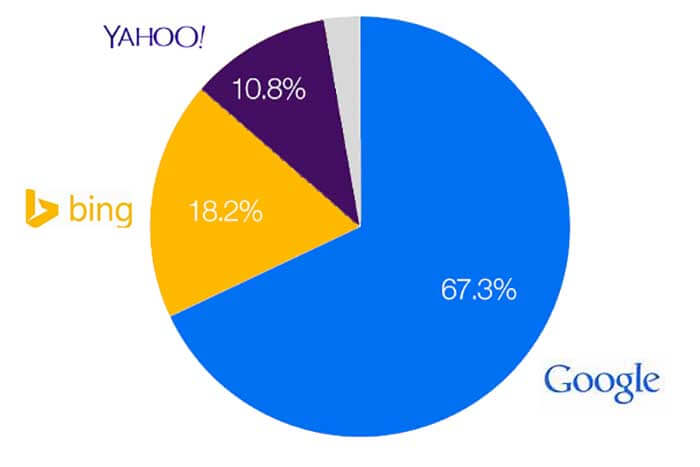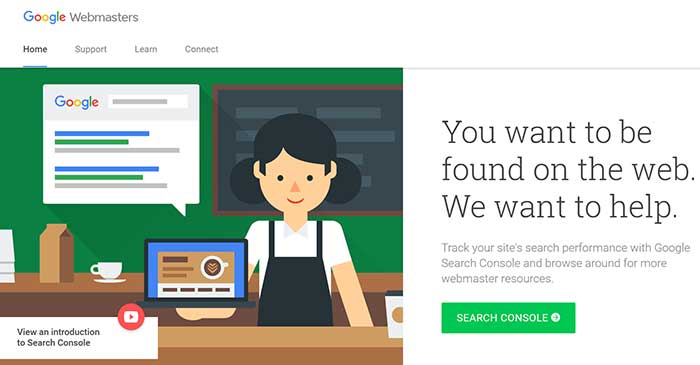That’s exactly what you need to reignite your business and start earning big and, no, I’m not joking. If you really want to know how to improve your online business, it’s for you.
You’ve worked hard to get where you are now. But is it where you really want to be? I hope no, and not because you’re not successful but because you want more. A great businessman is always hungry – hungry for more success in whatever he does.
If you feel the same, then this article is for you. It contains exactly 23 great tips on how to improve your online business without investing a fortune or putting yourself in debt for the rest of your life.
All these tips are actionable, which means that you can start implementing them right away and get results. They are far from philosophy and quite close to the real life.
23 Tips on How to Improve Your Online Business
I’ve split the tips into a few categories for your convenience – these categories are:
- Search Engine Marketing (SEM)
- Search Engine Optimization (SEO)
- Conversion Rate Optimization (CRO)
- Social Media Marketing (SMM)
Kicking it off with search engine marketing…
Tips for Great SEM
1. Run PPC Campaigns not Only in Google
Google a major player on the PCC market, but that doesn’t mean that you should overlook other search engines, such as Bing and Yahoo. As the following diagram suggests, you may be losing up to 30% of your potential audience, if you’re not using alternative search engines.

2. Put a Clear URL in Your Text Ad
When users see your text ads, they also see the target URL. Make sure this URL is written correctly and matches the overall message of your ad. Here’s a great video from Google Ads that explains the basics of an effective text ad writing (read this article as well).
3. Use Target Keywords in Your Text Ad Headline and Description
To help your ad show up higher on the search engine results page (SERP), include the keywords from your campaign in the headline and description of your ad. This will increase the relevance of the text ad and allow for a better indexing.
Here’s more information on the subject from Google.
4. Strong Call-to-Action is a MUST!
Call-to-action (CTA) is a short phrase we use to appeal to people and make them complete some action on the website. A powerful CTA alone can drastically increase the effectiveness of your ad campaign.
Writing great calls-to-action is a science of its own, yet it can be taught. Here’s my previous article “15 Tips How to Create a Call To Action That Will Double Your CTR,” where I delve deep into the subject.
5. Employ Call-Only Campaigns
To reduce the number of steps your potential customers may have to through to reach your business (click on the ad, read information, create an account, choose a plan/product etc), you can use call-only campaigns.
People will see just the ad text and your phone number. If they are interested enough, they can give you a call right from their browser (on the smartphone) and reach out to directly. Just make sure your track the calls.
6. Don’t Put Your Business Name in the Text Ad Headline
Why? Because the number of characters is limited and there are more important things you want to tell your potential customers.
Unless your company’s name is a call-to-action by itself, like “Buy Bobby’s Vegetables for Your Healthy Diet” (which could be quite cool, actually), stick to the core message in your text ad, and you’ll be fine.
7. Use the Correct Grammar and Punctuation
And not just for the text ad but generally, in whatever you write. Show your potential customers and Google (or Bing, or Yahoo) that you know the rules.
Oh, and did I mention that you should never use ALL CAPS? 🙂
8. Avoid Using Abbreviations
OK, your text ad may feature something like “We will fix your broken car ASAP.” How many people would understand what ASAP stands for? Maybe 50%, maybe 70%. But not all.
There are better ways to express your thoughts and still get the point across. For example, “Get your car fixed in no time” – that’s even 3 characters less than the original.
SEO-Related Tips

9. Post Only Original Content
This is crucial for blogs and the websites, which rely on the content heavily. Before you actually post anything, make sure that what you’re posting is original – use tools like Copyscape to check your content for plagiarism.
Sometimes plagiarism may happen unintentionally but you want to be sure in any case.
10. Update Your Content Regularly
Make sure your website doesn’t get stale and gets a fresh update at least once a week. Remember, Papa Google sees it all, knows it all – don’t try to fool the old man. 🙂
Regular updates ensure higher ranking on the SERP. If you want to learn more about the content, read this article “What Is Content Marketing: Guide to Successful Content Strategy.”
11. Get Featured on the Maps
This is especially true for the businesses which rely on the location heavily. Make sure your potential customers won’t have a hard time finding your company’s address on Google Maps or Apple Maps.
Remember to update your information if needed – phone number, business hours etc.
12. Use Geo-Specific Keywords
Again, if your business relies on its location, employ the so-called “local” keywords, that may lead potential customers from around your area directly to you.
13. Generate Backlinks
Nothing can give your website a better SEO boost quicker than high-quality backlinks from well-respected sources and influencers. They are the proof that you’re the real deal, and not only for search engine algorithm but for common people as well.
14. Stimulate Positive Reviews from Your Customers
People don’t trust businesses. People trust other people. Therefore, what you should do is ask them to voice out their opinion. But before that, of course, you should provide excellent service.
Ask your customers for public feedback, and you’ll be rewarded.
15. Run a Full Google Webmasters Checkup

Using Google Webmaster Tools, check your website to see if there’s anything wrong with your website (like, crawl errors, for example). Correct all the mistakes you will find.
Tips for CRO
16. Run a “Drunk User” Test
Well, not literally drunk. This test suggests a complete stranger browse your website chaotically in all directions to see if there are any flaws in the design, copy, or general UX.
People are known to act irrationally and this test can show some weak spots in your website design.
17. Employ A/B Testing
A/B testing allows you to quickly decide between various options like price, button color, CTA etc.
There are many tools out there but I suggest using Google Analytics or MixPanel.
18. Make Sure Your Website Is Mobile-Friendly
This is the most important tip of all. Everyone has a smartphone now, and you want to make sure your website looks good for these people.
Here’s a nifty tool by Google to check if your website design is mobile-friendly.
19. Reduce the Number of Steps in Any Multi-Step Process
Less traction means higher conversion rate. I’ll give you just one quick example: instead of hiding your products under various menus, place the top picks upfront on your front page. That’s what Amazon does in case you haven’t noticed.
Tips for SMM
20. Be Brief and Engaging
In every social media post that you write, be as brief as possible but, still, catchy enough to attract people’s attention.
Bad social media post example: “New product is available now. Get it now with 30% discount!”
Good social media post example: “You’ll never believe what my new product can do – at such price, it’s almost…”
21. Include High-Quality Images with Every Post
Social media is not about reading, but about viewing, watching, and listening. A nice, proper image can easily attract the necessary attention to your post and get you likes, fans, and, most importantly, subscribers.
22. Put the Content Above All Things
Be careful about posting promo stuff and “buy my product” posts. Treat your social media audience with due respect – remember, they are there to have fun and learn something new from your page, not buy stuff.
23. Post Regularly
Decide what the optimal time between the posts is and how long you can leave a post up on top to achieve the maximum engagement (usually it’s anywhere from 2 to 5 hours).
If you want to learn more about successful social media marketing, check out this article of mine called “32 Best Social Media Marketing Tips for Online Business.”
Conclusion
Now that you have learned the tips, it’s time to act! Try utilizing some of the tips from this article for your business and if you do everything right, there’s no reason why you shouldn’t expect great results. Good luck!
The right thing to do would be share this article with your friends on the social networks – just click on one of the icons of social media, it’s that easy.
If you have further questions on the subject, please write them in comments – I’ll be glad to answer.
For more good reads, be sure to check out these articles:





Comments0